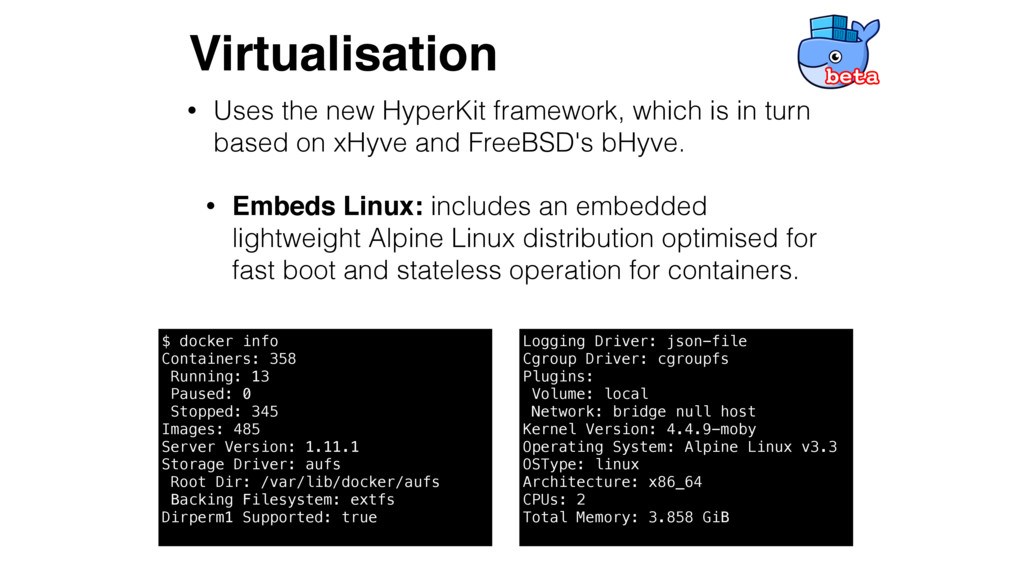
The following output information is visible- Extract kernel image: linuxkit/kernel:4.9.x

Then there's Services, also OCI-compatible mirrors, which are started and maintained by Container.įinally, specify the output file information that Moby will create during the build process. Next, there are some OCI-compatible Linux Kit images required by Init then, there is the Onboot section, which describes other basic images that need to be started by RunC sequence before other services are started. The first part is the "base" image, which defines Kernel and Kernel command line parameters. Before going into more detail (as you can see in the Linux Kit git repo), we will focus on the following points. $ vi linux-redis.yamlĬmdline: "console=ttyS0 console=tty0 page_poison=1" Create a simple image in Onboot that can start Redis instance, which is faster than starting from a complex point of view!įirst, start a Yaml file that describes the Linux image, and then pull out the instance to get the basic Docker image and add an entry to Redis. The LinuxKit project includes some examples, some of which also do live Demo in Dockercon. Customize and build Linux imagesĪfter completing these prerequisites, the first image is created.

When you're done, you need to be ready to build your first Linux image using LinuxKit. Kernel and Initrdimages take less time to build than a qcow image, so if you need to repeat Xhyve quickly, this is a good way to do it.įirst, CD to any favorite working directory, and Clone Linux Kit repo: $ git clone This is more convenient than the Moby's Hyperkit project. Yaml's feature points will be explained in detail later, and a variety of Docker commands will be executed to build Linux OS. The second step is to build the Moby tool. If you see the output containing various available flags, you are ready to move on to the next step. Installation on Machine- $ brew updateĪfter the installation is completed, verify that it runs according to the following code: $ xhyve -h

There are many ways to do this, but the simplest is to use Homebrew. This is what Docker prepared for MAC users. Its architecture allows virtual machines to run in user space.

Xhyve is a virtual machine operating system running in OSx's Hypervisor. Several clouds Just share this article with you.įirst of all, we need to prepare the following environment:ĭocker running (example 17.04.0-ce-mac7 (16352))Īfter preparation, follow the following steps. The author of the original article went back to Austin after the meeting and began to study it on the plane. The best way to learn the tool is to make the best use of it. On Dockercon 2017, Linux Kit, an architecture that creates the smallest Linux OS image in a container, was released.ĭoes that sound cool? Several clouds I saw an article on the Internet.


 0 kommentar(er)
0 kommentar(er)
